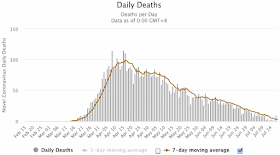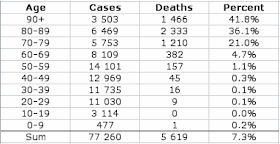Having discussed how to annotate rhymes in last month's blog post, we can now discuss the automated detection of rhymes. I am fascinated by this topic, although I have not managed to find a proper approach yet. What fascinates me more, however, is how easily the problem is misunderstood. I have witnessed this a couple of times in discussions with colleagues. When mentioning my wish to create a magic algorithm that does the rhyme annotation for me, so that I no longer need to do it manually, nobody seems to agree with me that the problem is not trivial.
On the contrary, the problem seems to be so easy that it should have been solved already a couple of years ago. One typical answer is that I should just turn to artificial intelligence and neural networks, whatever this means in concrete, and that they would certainly outperform any algorithm that was proposed in the past. Another typical answer, which is slightly more subtle, assumes that some kind of phonetic comparison should easily reveal what we are dealing with.
Unfortunately, none of these approaches work. So, instead of presenting a magic algorithm that works, I will use this post to try and explain why I think that the problem of rhyme detection is far less trivial than people seem to think.
Defining the problem of automated rhyme detection
Before we can discuss potential solutions to rhyme detection, we need to define the problem. If we think of a rhyme annotation model that allows us to annotate rhymes at the level of specific word parts (not restricted to entire words), the most general rhyme detection problem can be presented as follows:
Given a rhyme corpus that is divided into poems, with poems divided into stanzas, and stanzas being divided into lines, find all of the word parts that clearly rhyme with each other within each stanza within each poem within the corpus.With respect to machine learning strategies, we can further distinguish supervised versus unsupervised learning. While supervised learning for the rhyme detection problem would build on a large annotated rhyme corpus, in order to infer the best strategies to identify words that rhyme and words that do not rhyme, unsupervised approaches would not require any training data at all.
With respect to the application target, we should further specify whether we want our approach to work for a multilingual sample or just a single language. If we want the method to work on a truly multilingual (that is: cross-linguistic) basis, we would probably need to require a unified transcription for speech sounds as input. It is already obvious that, although the annotation schema I presented last month is quire general, it would not work for those languages with writing systems that are not spelled from left to write, for example, not to speak of writing systems that are not alphabetic.
Why rhyme detection is difficult
It is obvious that the most general problem for rhyme detection would be the cross-linguistic unsupervised detection of rhymes within a corpus of poetry. Developing systems for monolingual rhyme detection seems to be a bit trivial, given that one could just assemble a big list of words that rhyme in a given language, and then find where they occur in a given corpus. However, given that the goal of poetry is also to avoid "boring" rhymes, and come up with creative surprises, it may turn out to be less trivial than it seems at first sight.
As an example, consider the following refrain from a recent hip-hop song by German comedian Carolin Kebekus, in which the text rhymes Gemeinden (community) with vereinen (unite), as well as Mädchen (girl) with Päpstin (female pope) (the video has English subtitles for those who are interested in the text but do not speak German).
 |
| Figure 1: Rhyme example from a recent German hip-hop song. |
While one could argue whether those words qualify as proper rhymes and were intended as such, I am quite convinced that the words were chosen for their near-rhyme similarity, and I am also convinced that most native speakers of German listening to the song will understand the intended rhyme here. Both rhymes are not perfect, but they are close enough, and they are beyond doubt creative and unexpected — it is extremely unlikely that one could find them in any German rhyme book. This example shows that humans' creative treatment of language keeps constantly searching for similarities that have not been used before by others. This leads to a situation where we cannot simply use a static look-up table of licensed rhyme words, to solve the problem of rhyme detection for a particular language.
What we instead need is some way to estimate the phonetic similarity of words parts, in order to check whether they could rhyme or not. However, since languages may have different rhyme rules, these similarities would have to be adjusted for each language. While phonetic similarity can be measured fairly well with the help of alignment algorithms applied to phonetic transcriptions, what counts as being similar may differ from language to language, and rhyme usually reflects local similarity of words.
Since rhyme is closely accompanied by rhythm and word or phrase stress, we would also need this information to be supplied from the original transcriptions. All in all, working on a general method for rhyme detection seems like a hell of an enterprise, specifically whilever we lack any datasets that we could use for testing and training.
Less interesting sub-problems and proposed solutions
While, to the best of my knowledge, nobody has every tried to propose a solution for the general problem of rhyme detection as I outlined it above, there are some studies in which a sub-problem of rhyme detection has been tackled. This sub-problem can be presented as follows:
Given a rhyme corpus of poems that are divided into stanzas, which are themselves divided into lines, try to find the rhyme schemas underlying each stanza.This problem, which has been often called rhyme scheme discovery, has been addressed using at least three approaches that I have been able to find. Reddy and Knight (2011) employ basic assumptions about the repetition of rhyme pairs in order to create an unsupervised method based on expectation maximization. Addanki and Wu (2013) test the usefulness of Hidden Markov Models for unsupervised rhyme scheme detection. Haider and Kuhn (2018) use Siamese Recurrent Networks for a supervised approach to the same problem. Additionally, Plechač (2018) proposes a modification of the algorithm by Reddy and Knight, and tests it on three languages (English, Czech, and French).
One could go into the details, and discuss the advantages and disadvantages of these approaches. However, in my opinion it is much more important to emphasize the fundamental difference between the task of rhyme scheme detection and the problem of general rhyme detection, as I have outlined it above. Rhyme scheme detection does not seek to explain rhyme in terms of partial word similarity, but rather assumes that a general overarching structure (in terms of rhyme schemas) underlies all kinds of rhymed poetry.
There are immediate consequences to assuming that rhymed poetry needs to be organized by rhyme schemes. First, the underlying model does not accept rhymes that occur in any other place than the end of a given line, which is problematic, specifically when dealing with more recent genres like hip-hop. Second, if one assumes that rhyme scheme structure dominates rhymed poetry, the model does not accept any immediate, more spontaneous forms of rhyming, which, however, frequently occur in human language (compare the famous examples in political speech, discussed by Jakobson 1958).
Concentrating on rhyme schemes, instead of rhyme word detection, has immediate consequences for the algorithms. First, the methods need to be applied to "normal" poetry, given that any form of poetry that evades the strict dominance of rhyme schemes cannot be characterized properly by the underlying rhyme model. Second, all that the methods need as input are the words occurring at the end of a line, since these are the only ones that can rhyme (and the test datasets are all constructed in this way alone). Third, the methods are all trained in such a way that they need to identify rhymes in a text, so that they cannot be used to test whether a given text collection rhymes or not.
Outlook
In this post, I have tried to present what I consider to be the "ultimate" problem of rhyme detection, a problem that I consider to be the "general" rhyme detection problem in computational approaches to literature. In contrast, I think that the problem of detecting only rhyme schemes is much less interesting than the general rhyme detection problem. The focus on rhyme schemes, instead of focusing on the actual words that rhyme, reflects a certain lack of knowledge regarding the huge variation by which people rhyme words across different languages, cultures, styles, and epochs.
If all poetry followed the same rhyme schemes, then we would not need any rhyme detection methods at all. Think of Shakespeare's 154 sonnets, all coded in the same rhyme schema: no algorithm would be needed to detect the rhyme schema, as we already know it beforehand — for a perfect supervised method, it would be enough to pass the algorithm the line numbers and the resulting schema.
The picture changes, however, when working with different styles, especially those representing an emerging rather than an established tradition of poetry. Rhyme schemes in the most ancient Chinese inscriptions, for example, are far less fixed (Behr 2008). In modern hip-hop lyrics, which also represent a tradition that has only recently emerged, it does not make real sense to talk about rhyme schemes either, as can be easily seen from the following excerpt of Akhenaton's Mes soleils et mes lunes, which I have tried to annotate to the best of my knowledge.
 |
| Figure 2: First stanza from Akhenaton's Mes soleils et mes lunes |
Surprisingly, both Haider and Kuhn (2018), as well as Addanki and Wu (2013) explicitly test their methods on hip-hop corpora. They interpret them as normal poems, extract the rhyme words, and classify them line by line. I would be curious what these methods would yield if they are fed non-rhyming text passages. For me, the ability of an algorithm to distinguish rhyming from non-rhyming texts is one of the crucial tests for its suitability. We do not need approaches that confirm what we already know.
Ultimately, we hope to find methods for rhyme detection that could actively help us to learn something about the difference between conscious rhyming versus word similarities by chance. But, given the huge differences in rhyming practice across languages and cultures, it is not clear if we will ever arrive at this point.
References
Addanki, Karteek and Wu, Dekai (2013) Unsupervised rhyme scheme identification in Hip Hop lyrics using Hidden Markov Models. In: Statistical Language and Speech Processing, pp. 39-50.
Behr, Wolfgang (2008) Reimende Bronzeinschriften und die Entstehung der Chinesischen Endreimdichtung. Bochum:Projekt Verlag.
Haider, Thomas and Kuhn, Jonas (2018) Supervised rhyme detection with Siamese recurrent networks. In: Proceedings of Workshop on Computational Linguistics for Cultural Heritage, Social Sciences, Humanities and Literature, pp. 81-86.
Jakobson, Roman (1958) Typological studies and their contribution to historical comparative linguistics. In: Proceedings of the Eighth International Congress of Linguistics, pp. 17-35.
Plecháč, Petr (2018) A collocation-driven method of discovering rhymes (in Czech, English, and French poetry). In: Masako Fidler and Václav Cvrček (eds.) Taming the Corpus: From Inflection and Lexis to Interpretation. Cham:Springer, pp. 79-95.











